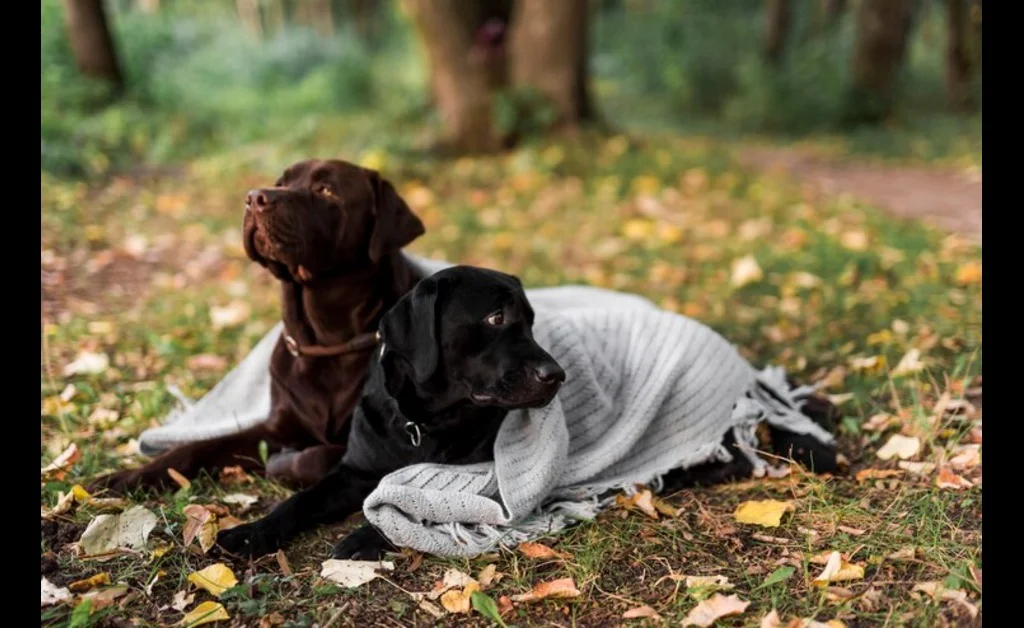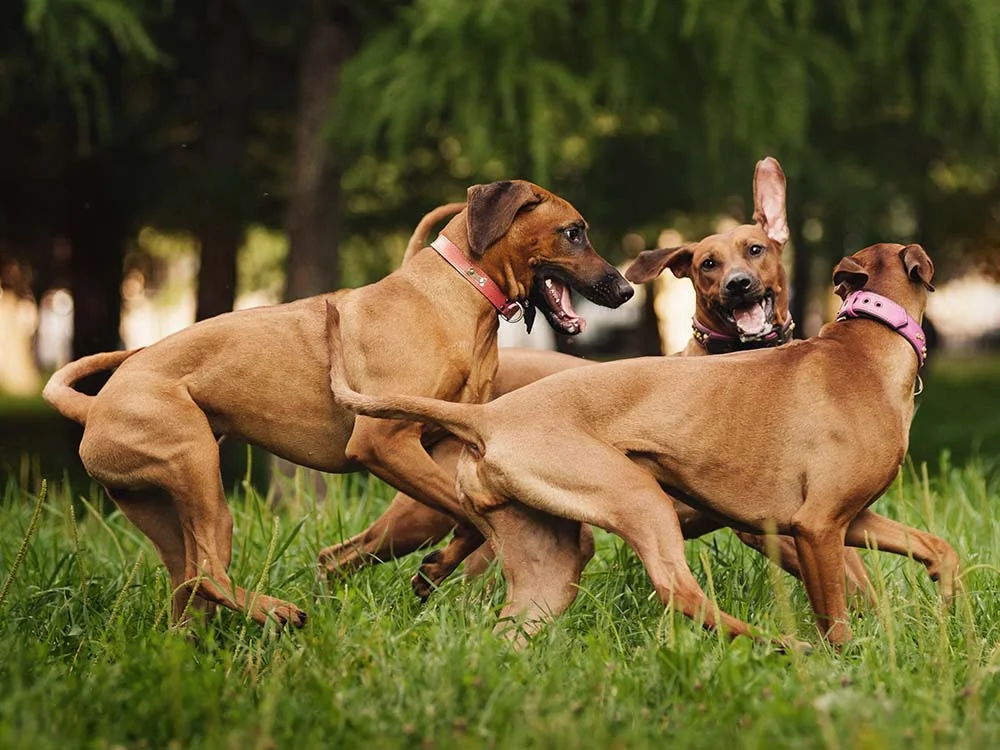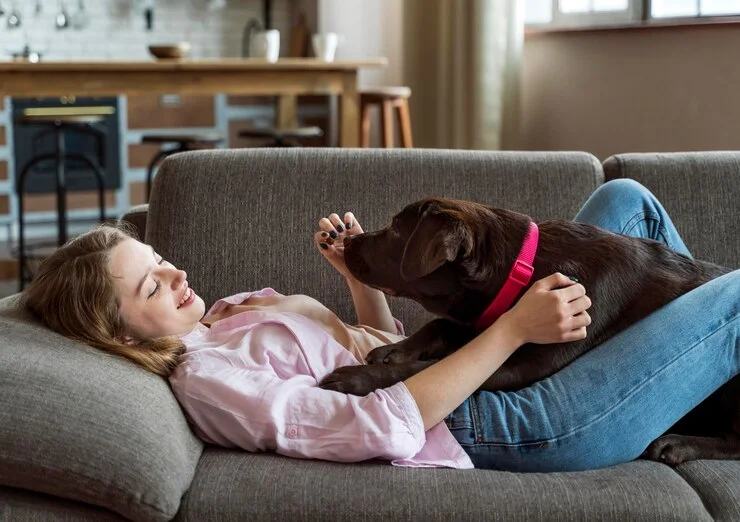Why Does My Dog Sit on My Other Dog?
Have you ever witnessed your dogs snuggling together, only to have one of them plop down right on top of the other? If you’re a multi-dog household owner, this peculiar behavior is likely a familiar sight. While it may seem odd to us humans, there are actually several reasons why dogs engage in this curious act of sitting on their canine companions.
Establishing Dominance and Hierarchy
Dogs, much like their wolf ancestors, have a strong pack mentality ingrained in their DNA. In a multi-dog household, there is often an established hierarchy, with one dog asserting themselves as the leader or alpha. Sitting on another dog can be a way for the more dominant canine to remind their pack mates of their higher rank and authority.
Case Study: Max and Buddy
Max, a 5-year-old German Shepherd, and Buddy, a 3-year-old Labrador Retriever, live together in the same household. Despite their size difference, Max often sits on top of Buddy, pinning him down or laying across his back. This behavior is likely Max's way of asserting his dominance and maintaining his position as the alpha dog in their small pack.
However, it’s important to note that dominance behavior can sometimes escalate into aggression or resource guarding if not properly managed. If you notice any signs of distress or discomfort from either dog, it’s best to consult with a professional animal behaviorist for guidance.
Seeking Attention and Affection
Dogs are social creatures that thrive on physical closeness and affection from their pack members. Sitting on another dog can be a way for your furry friend to seek attention and bond with their canine companions. This behavior is often reinforced when the owner responds with positive reinforcement, such as petting or offering treats.
Personal Experience: Bella and Charlie
Bella, my 4-year-old Golden Retriever, has a habit of sitting on top of Charlie, our 6-year-old Pomeranian. While it may look like an uncomfortable position for Charlie, he doesn't seem to mind at all. In fact, he often leans into Bella's embrace, enjoying the warmth and affection she provides. This behavior strengthens their bond and brings them closer together as part of our family pack.
However, it’s essential to monitor this behavior closely and ensure that neither dog is showing signs of distress or discomfort. If one dog consistently tries to avoid or escape the other’s attention, it may be time to intervene and establish boundaries.
Marking Territory and Scent Communication
Dogs have an incredible sense of smell and rely heavily on scent marking to communicate and establish their territory. When one dog sits on another, they are essentially exchanging and mingling their scents, creating a unified pack odor.
**Fun Fact:** Dogs have approximately 300 million olfactory receptors in their noses, compared to humans, who have only about 6 million. This heightened sense of smell plays a crucial role in their social dynamics and communication.
By sitting on another dog, they are essentially claiming that dog as part of their territory and reinforcing their pack bond. This behavior can be particularly prevalent among newly introduced dogs or in households with frequent visitors, as dogs will often attempt to re-establish their territory through scent marking.
Providing Comfort and Security
Dogs are creatures of habit and routine, and they often find comfort and security in familiar surroundings and pack members. Sitting on another dog can be a way for your furry friend to seek warmth, safety, and reassurance, especially in stressful or unfamiliar situations.
> "Dogs are not our whole life, but they make our lives whole." - Roger Caras
If you notice your dog sitting on another during thunderstorms, fireworks, or other loud or frightening events, it’s likely a sign that they are seeking comfort and security from their canine companion. This behavior can also be observed in dogs that have recently experienced a major life change, such as moving to a new home or the addition of a new family member.
Playful Behavior and Socialization
For many dogs, sitting on another is simply a form of playful interaction and socialization. Puppies and younger dogs, in particular, often engage in this behavior as part of their natural play and development.
**Tip:** Proper socialization and exposure to other dogs from a young age can help prevent problematic behaviors and promote healthy social skills in your furry friend.
During playtime, you may notice your dogs taking turns sitting on each other, chasing one another, or engaging in other playful antics. This behavior not only helps burn off excess energy but also strengthens their bond and allows them to communicate and establish healthy social dynamics.
Underlying Health or Behavioral Issues
While sitting on another dog is generally a harmless behavior, in some cases, it may be a symptom of an underlying health or behavioral issue. For example, a dog that consistently sits on another may be exhibiting signs of resource guarding, anxiety, or even compulsive behavior disorders.
**Important:** If you notice any concerning changes in your dog's behavior, such as excessive sitting, aggression, or lack of interest in typical activities, it's crucial to consult with a veterinarian or professional animal behaviorist to rule out any potential medical or psychological issues.
By addressing any underlying problems early on, you can help ensure the well-being of your furry companions and promote a harmonious multi-dog household.
General Tips and Advice
Managing a multi-dog household requires patience, understanding, and a commitment to providing a safe and nurturing environment for all your furry friends. Here are some general tips and advice to help you navigate the dynamics of your canine pack:
- Proper Socialization and Training: Investing in early socialization and obedience training can help establish healthy boundaries and promote positive interactions between your dogs.
- Adequate Space and Resources: Ensure that each dog has their own designated space, bed, food and water bowls, and toys to prevent resource guarding or territorial disputes.
- Equal Attention and Affection: Make an effort to provide equal attention and affection to all your dogs, as jealousy or perceived favoritism can lead to conflicts within the pack.
- Supervision and Intervention: Closely monitor your dogs’ interactions and be prepared to intervene if any situation appears to be escalating or causing distress to one or more of your furry companions.
- Professional Guidance: If you encounter any persistent or concerning behaviors, don’t hesitate to seek guidance from a professional animal behaviorist or a certified dog trainer. They can provide valuable insights and tailored solutions to address any issues within your multi-dog household.
People Also Ask
Q: Is it normal for dogs to sit on each other?
Yes, it is a relatively common behavior among dogs, especially in multi-dog households. While it may seem odd to us humans, it serves various purposes for dogs, including establishing dominance, seeking affection, and scent marking.
Why does my dog sit on my other dog’s head?
Sitting on another dog’s head can be a way for your dog to assert their dominance or claim the higher ground. It can also be a playful behavior or a means of seeking attention and affection from their canine companion.
How can I stop my dogs from sitting on my other dog?
If the behavior is causing distress or discomfort to either dog, you can try distracting them with treats or toys, providing separate spaces for each dog, or seeking guidance from a professional animal behaviorist for more effective training techniques.
Is it a dominance behavior when a dogs sits on another dog?
While sitting on another dog can be a dominance behavior, it is not always the case. It can also be a sign of affection, comfort-seeking, or playful interaction. It’s important to observe the overall dynamics and body language of your dogs to determine the true motivation behind the behavior.
Can sitting on another dogs cause injury or stress?
In most cases, sitting on another dog is a harmless behavior, especially if both dogs are comfortable and have a healthy relationship. However, if one dog is significantly larger or heavier than the other, or if the behavior is excessive or aggressive, it can potentially cause physical injury or emotional stress. It’s important to monitor their interactions and intervene if necessary.




